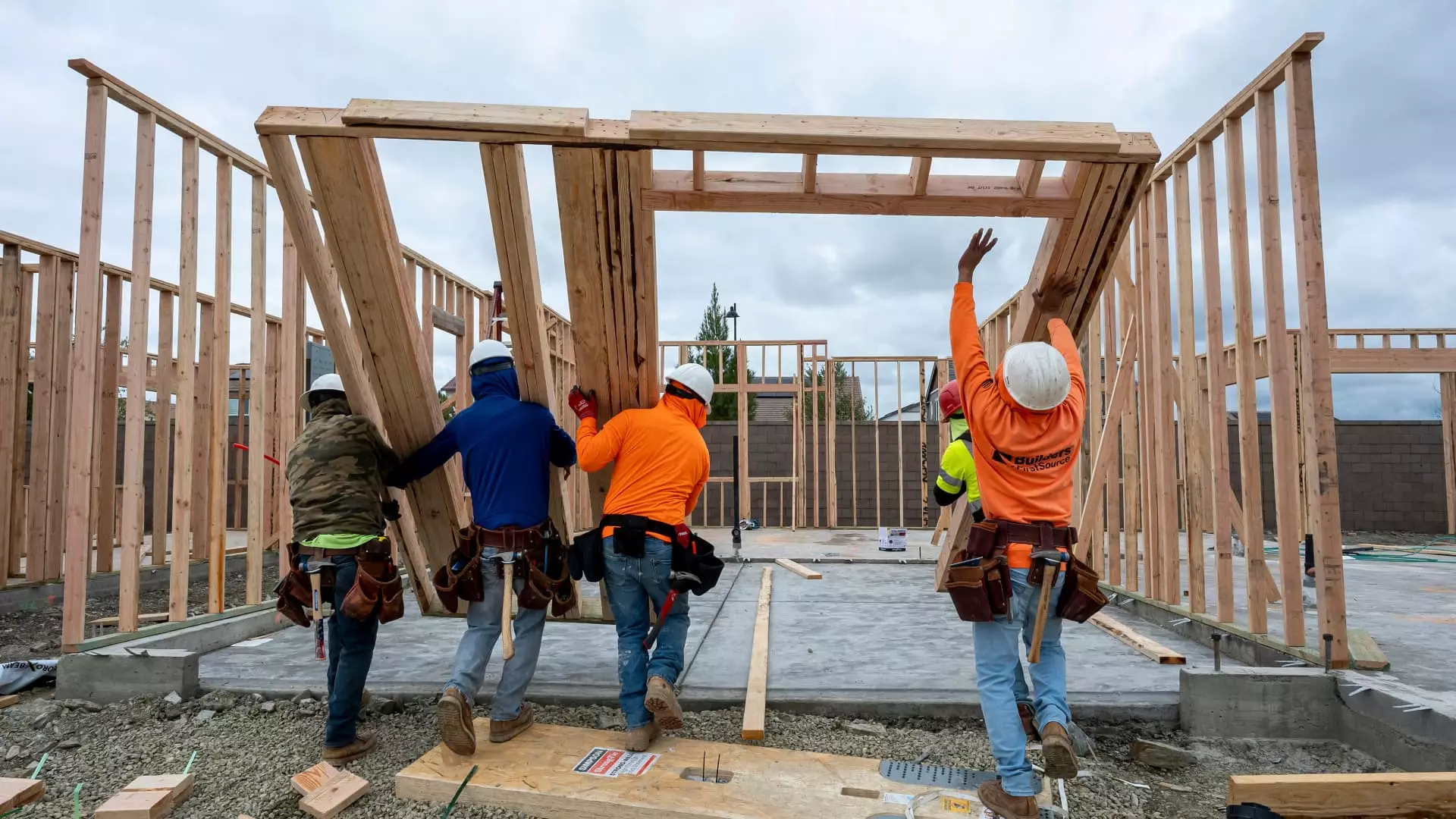The housing market, once a beacon of optimism for the American economy, is now flashing alarming signs of distress. As mortgage rates continue to rise, they are coupled with gnawing uncertainty regarding the broader economic landscape. This potent combination has sent builder sentiment plunging into troubling territory, where the National Association of Home Builders (NAHB) and Wells Fargo Housing Market Index (HMI) recorded a drop to 32 in June, a stark indication that market confidence is eroding. Analogous to a house of cards, this sentiment decline below the 50-point threshold is not merely a statistic; it reveals a deeper malaise in a market that is accustomed to growth.
The HMI’s decline has caught many analysts off guard, particularly in light of recent tariff negotiations and policy shifts within the Trump administration that proponents hoped would usher in a period of renewal. Instead, what we see is a stark descent that has only been mirrored twice since 2012—during instances of extraordinary volatility, namely in December 2022 post a steep rise in mortgage rates and during the nascent phase of the pandemic in April 2020. The alarming nature of the current decline cannot be overstated; it raises questions about the immediate future of the housing market.
Deepening Buyer Apathy
A revealing breakdown of the HMI exposes the underlying cracks. Current sales conditions clocked in at 35, sales expectations for the next six months tumbled to 40, and buyer traffic collapsed to a disheartening 21—an all-time low since the end of 2023. The sentiment echoes a dispassionate chorus of hesitation among prospective homeowners, who are increasingly moving to the sidelines due to these insurmountable mortgage rates and economic trepidation. Builder Buddy Hughes aptly summarizes this phenomenon, asserting that buyers are becoming increasingly reticent, thus exacerbating the situation.
Awash in uncertainty, builders are beginning to cut prices to entice buyers back into the market. In June, a striking 37% of builders reported having slashed prices, marking the highest level of price reductions tracked by the NAHB in three years. With an average reduction of 5%, this trend is a stark admission that homes are becoming less accessible for many, not unlike a fire sale of assets in the face of an impending economic storm.
Economic Consequences and Market Forecasts
The economic ramifications of this troubling trend extend well beyond the housing market itself. As noted by Robert Dietz, the NAHB’s chief economist, rising inventory levels combined with buyer hesitancy are setting the stage for weakening price growth in numerous markets. Some regions are even witnessing acute price declines, particularly in the resale segment. This downward spiral is not just a passing phase; it is a bellwether for an impending contraction in new single-family construction, with forecasts indicating a significant slowing in starts for 2025.
The latest earnings report from Lennar, one of the nation’s premier homebuilders, underscores the severity of this crisis. A staggering nearly 9% drop in average home prices from the same quarter a year prior reflects an unsettling reality. As co-CEO Stuart Miller noted, the firm is grappling with higher mortgage interest rates and a pervasive sense of consumer apprehension. As they strategize to drive volume, the measures taken are symptomatic of a larger systemic failure that jeopardizes not only their business but the housing market overall.
Regional Disparities and Future Implications
Unsurprisingly, the Southern and Western regions of the United States, where housing activity is typically most vigorous, are experiencing the most pronounced drops in builder sentiment. This regional disparity vanishes when one considers that these two areas are most affected by escalating construction costs, tightening regulations, and a fluctuating demand landscape.
Looking ahead, the prospects appear dim for the housing sector without decisive action. Industry stakeholders must address buyer sentiment head-on through strategies that promote affordability and stabilize mortgage rates. Should they fail to act, the housing market risks spiraling into a prolonged slump, causing ripple effects that could shake the foundations of the broader economy.
In these turbulent times, it is crucial to assess the health of the housing market not just as a metric of construction activity, but as a barometer for the economic well-being of millions. The challenges faced by consumers and builders alike speak to deeper issues within our economic fabric, emphasizing a pressing need for comprehensive policy reform that cultivates growth and restores faith in this pivotal sector.

